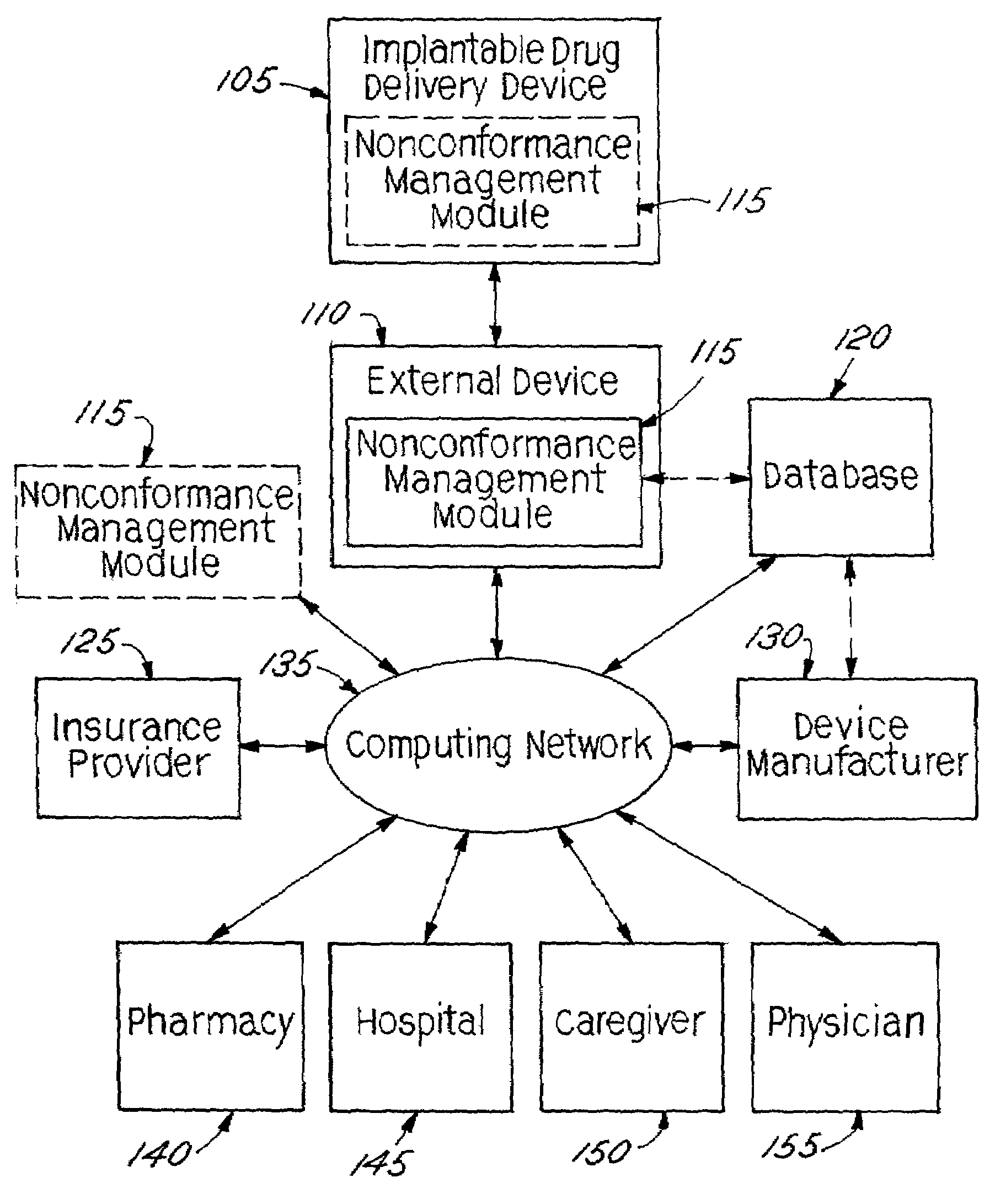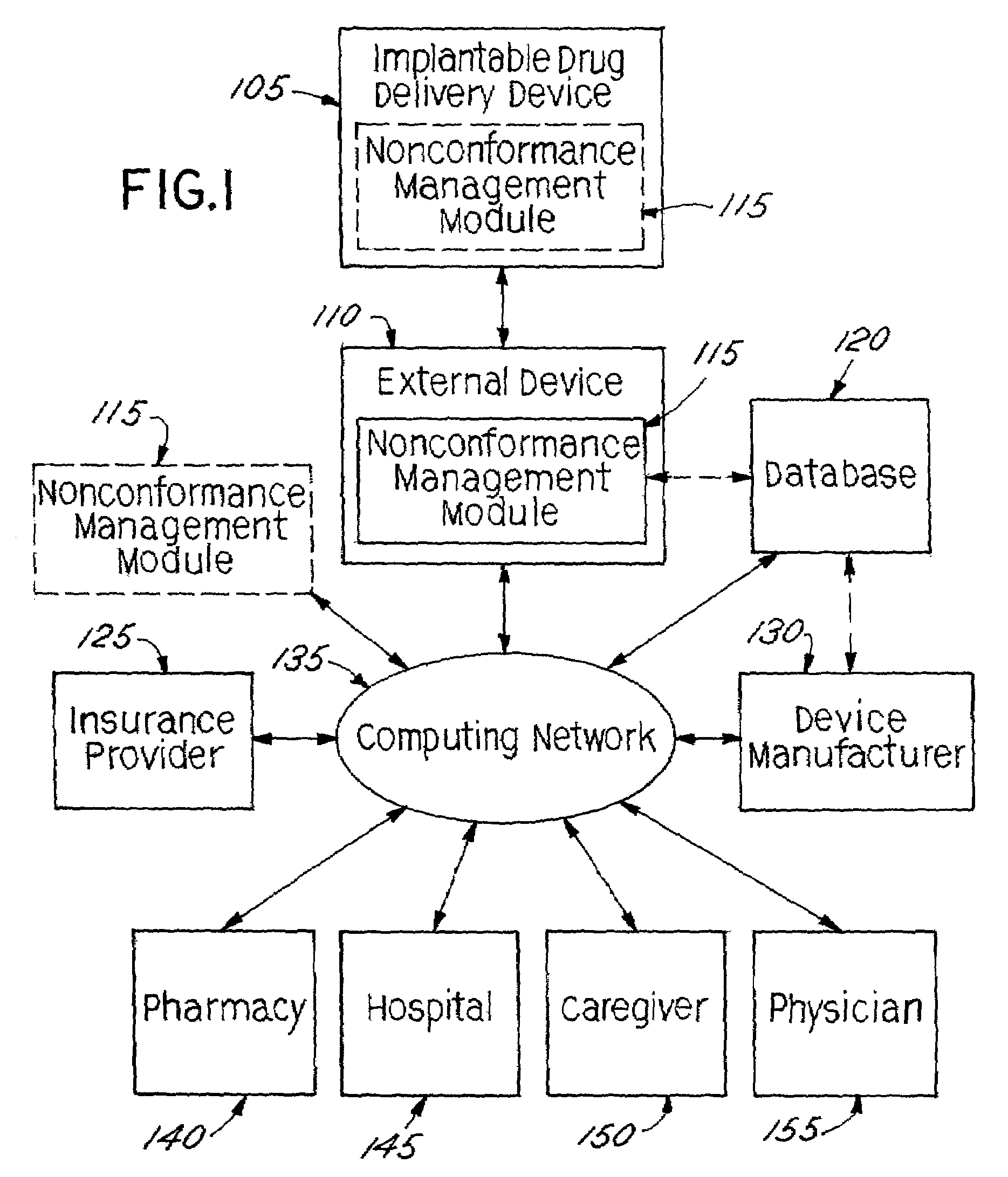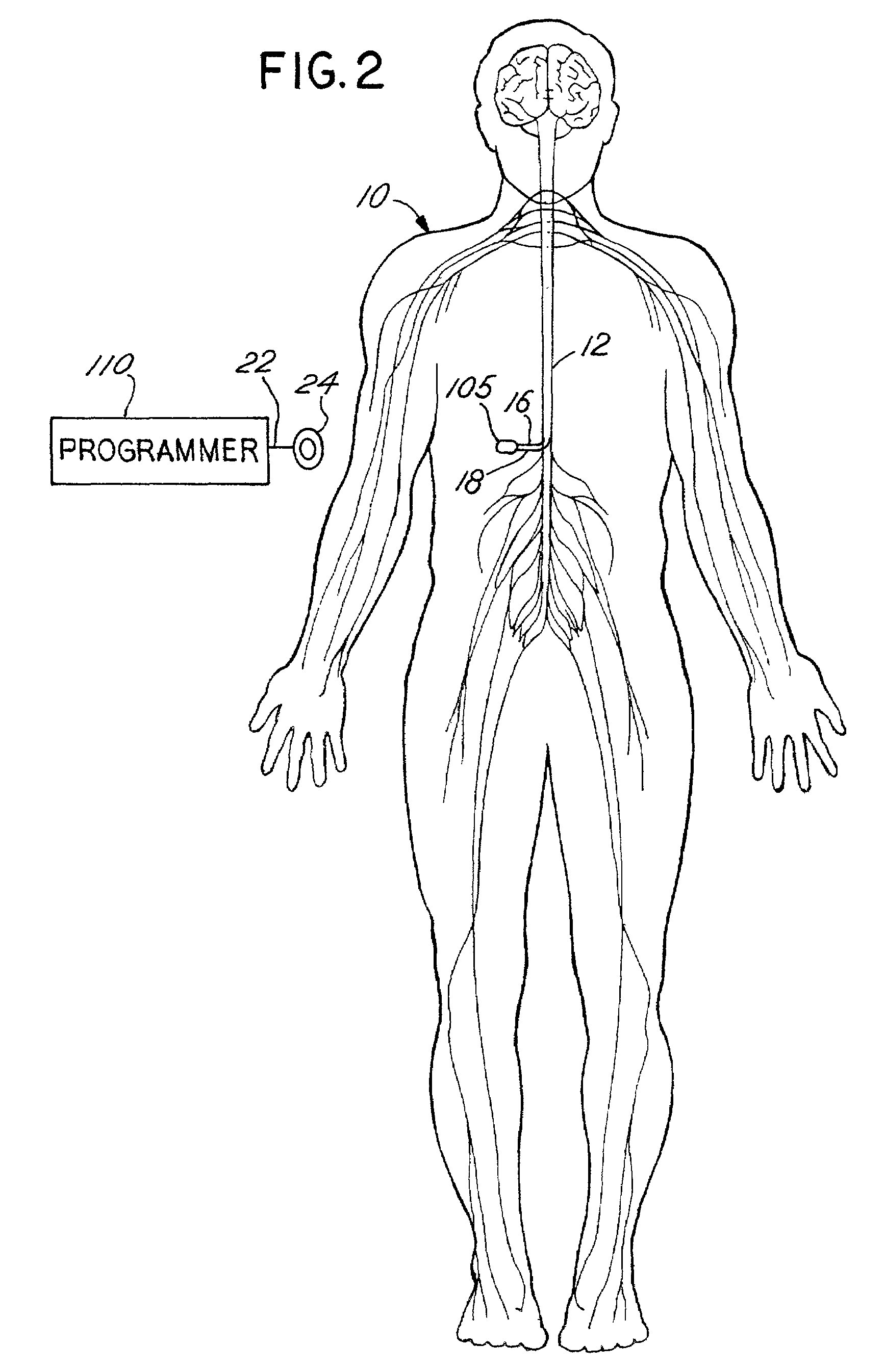Non-conformance monitoring and control techniques for an implantable medical device
a medical device and non-conformance technology, applied in local control/monitoring, digital computer details, instruments, etc., can solve the problems of inability to administer oral administration, insufficient absorption of substances in the gut of patients, and inability to tolerate patients
- Summary
- Abstract
- Description
- Claims
- Application Information
AI Technical Summary
Benefits of technology
Problems solved by technology
Method used
Image
Examples
Embodiment Construction
[0033]In accordance with the present invention, an implantable drug delivery device is equipped with automated management control capabilities. Although described in the context of implanted drug delivery devices, the present invention may also be implemented generally within implantable medical devices, including but not limited to, implantable electrical stimulation devices, combined drug delivery and stimulation devices, cardiac devices, and the like.
[0034]Although not required, the invention will be described in part in the general context of computer-executable instructions, such as program modules. Generally, program modules include routines, programs, objects, scripts, components, data structures, etc. that perform particular tasks or implement particular abstract data types. Program modules maybe part of a single software program, may be implemented as separate software programs, or may be part of hardwired devices having various electronic components for carrying out the de...
PUM
 Login to View More
Login to View More Abstract
Description
Claims
Application Information
 Login to View More
Login to View More - R&D
- Intellectual Property
- Life Sciences
- Materials
- Tech Scout
- Unparalleled Data Quality
- Higher Quality Content
- 60% Fewer Hallucinations
Browse by: Latest US Patents, China's latest patents, Technical Efficacy Thesaurus, Application Domain, Technology Topic, Popular Technical Reports.
© 2025 PatSnap. All rights reserved.Legal|Privacy policy|Modern Slavery Act Transparency Statement|Sitemap|About US| Contact US: help@patsnap.com



